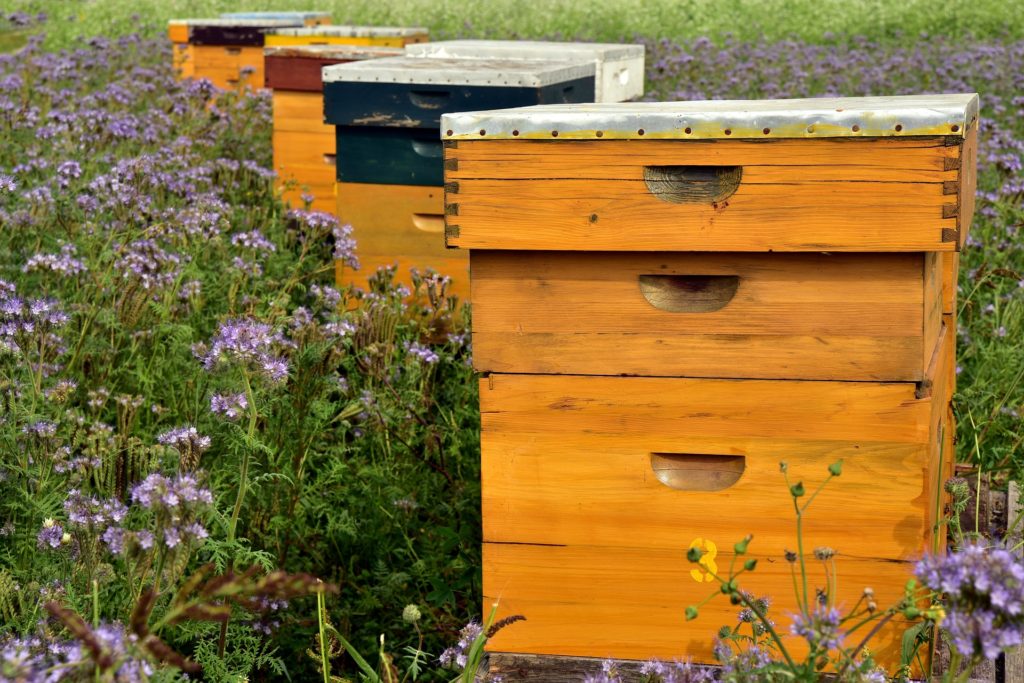Beekeeping is very pleasant, interesting and fun to have as a craft or a hobby. However, most of the beginner beekeepers are sometimes discouraged by the whole equipment and everything that goes with beekeeping. In the beginning, we are very often enthusiastic and we acquire all of the equipment that we need. But, we should not use everything right from the start. There is always the question of how many brood boxes to use, when and how many of the supers to use, etc? Supers and brood boxes are the major part of a beehive.
What is a super?
The additional boxes above the brood box are the supers. Their purpose is to give extra space for the worker bees to store honey. However, beginner beekeepers should be aware that placing additional supers does not mean more honey. This is often a misunderstanding that new beekeepers have. If we place all of our supers early, it would cost us more than it would bring benefits.
What is a brood box?
The single-level box that contains the Queen bee and all of its eggs is called a brood box. It is usually placed at the bottom of the stack. It is isolated from the supers with a screen.
Why is the brood box so important?
We can easily say, that one of the main and crucial factors for a successful beehive is the brood box. If there is not a brood box, that would mean that there is no Queen and therefore there are no eggs. Accordingly, the need for worker honey bees to stay in the beehive will not be present, and there would not be any worker bees. The worker honey bees will leave the beehive in search of a new home with a Queen that will function well.
How Many Brood Boxes Should We Have?
Now that we know the importance of the brood boxes, we can discuss how many of them we need. A general rule is that we need to use one or two brood boxes. Adding too many brood boxes will not implicitly mean that we are doing our bees a favor. In fact, we are not helping them. If the reason for adding more than two brood boxes is a large hive, it is better to split them. After this, we can once again distribute one or two brood boxes to each of the hives.
A very important thing to take account for is that we do not need to establish the number of brood boxes at the beginning and keep it fixed. For example, we can start with one box and a couple of supers and see what will happen. When we notice that the bees are crowded and are running out of space, we can add one or two more supers. Approximately at the point of 5-6 supers, and with the bee colony constantly growing, we can add another brood box on top and more supers on top of that.
The climate factor
Bees’ productivity is under the influence of the climate. If you live in a climate close to the equator, your temperature fluctuations might not change a lot between seasons. Therefore, the bees’ productivity will not be slowed down and you will have a different strategy than beekeepers that live in different climates.
On the other hand, if you live in a colder climate, you will notice that the bees’ productivity will decrease in the late summer and autumn. The lower temperatures are a signal for the bees to start their transition to efficiency mode. In these colder temperatures, the Queen is going to be really busy during spring and you need to watch carefully the single brood box and supers. If you are thinking that there is a need for an additional brood box, you should add it before the summer begins. When the summer is coming to an end, because of the slowing of bees’ production, you should pull out this second brood box.
The observation of the Queen
An essential thing to do when deciding on the number of brood boxes is to observe the Queen. If we talk about an average Queen, we can say that she is able to keep up with only one brood box. When making a decision for adding one brood box more, we should not look only whether the bees are outgrowing the space. We also need to consider the condition of the Queen in the original box. If the Queen cannot keep up, we should not add one brood box more. This is a very important factor.
The beehive condition factor
Another important thing is the condition inside the beehive. Bees enjoy being comfortable and warm. If you provide them with a lot of space, they will work harder. They will need to maintain the CO2 volume they need and the right temperature in the hive as well. This will slow down the growth of the hive because bees will slow down their production and honey.
This is why we stated that you need to go step by step. Start with one brood box and several supers and add more when needed. When your bees reach the excess productivity, this will be a signal for the second brood box. The second brood box will result in more bees than before.
Honey harvesting
The schedule on which we are to harvest honey is also another very important factor. Beehives that have single brood box and 3-4 supers will load up with honey early in the spring. This should not be a signal for you that you need to add supers or another brood box. You can harvest the honey and let the beehive’s structure remain as it is. However, if you do not have time to harvest the honey the situation changes. In this case, you should add supers in order to provide the bees some additional space. Furthermore, having in mind everything stated before and remembering everything that you learned so far, you can decide whether to introduce a second brood box.
Consult with a more experienced beekeeper
If you are still having troubles and cannot clearly make a decision, feel free to consult with a local beekeeper. Please note to ask for help only from experienced beekeepers from your region, because of the similarity of the climate and environment.
Beekeeping is a wonderful craft or hobby and there are many benefits from it. The best thing to do is not to be afraid, ask for help, be willing to learn more and enjoy it as much as possible. Sometimes you might have to learn by yourself and study your bees through trial and error. However, always look at this as a possibility to learn more, and not as a threat!


Good information! I’ve been raising bees for six or seven years, and haven’t got brave enough yet to try single brood boxes, but who knows, next spring might be when I take the leap. I like the idea of single brood boxes and a little smaller hives. I’ve also been getting into Top Bars!
There is no right answer. I have seen bees using no shelter just laying comb in trees, in old abandon vehicles, in dormers and even empty trash cans. I know of one bee club that the management tells the members to only use 10 frame deep boxes for everything. Another that the management recommends 10 frame hives and the use of two brood boxes and yet a third club that tells its members use 8 frame medium boxes for everything. In each case the management of each club have been successful raising honey bees. The big question is what works best for you and your bees. I have been in a auto accident and have spine problems. I use 8 frame hives and medium boxes because of the weight in lifting. My bees do very well and this year I harvested more honey than last year and last year was a record setting year. Do what works best for you and your bees.
Très intéressant! J’ai 3 types de ruches Warré Dadant, et top-bar dans ma région, val de loire , il semble que ce soit la Warré,plus petite qui convienne le mieux à l’hivernage et peut-être la top bar pour la facilité de cloisonnement.
Very interesting! I have 3 types of beehives Warré Dadant, and top-bar. In my region, Loire valley France , it seems that it is the Warré,smaller that is best suited to wintering and perhaps the top bar for the ease of partitioning .